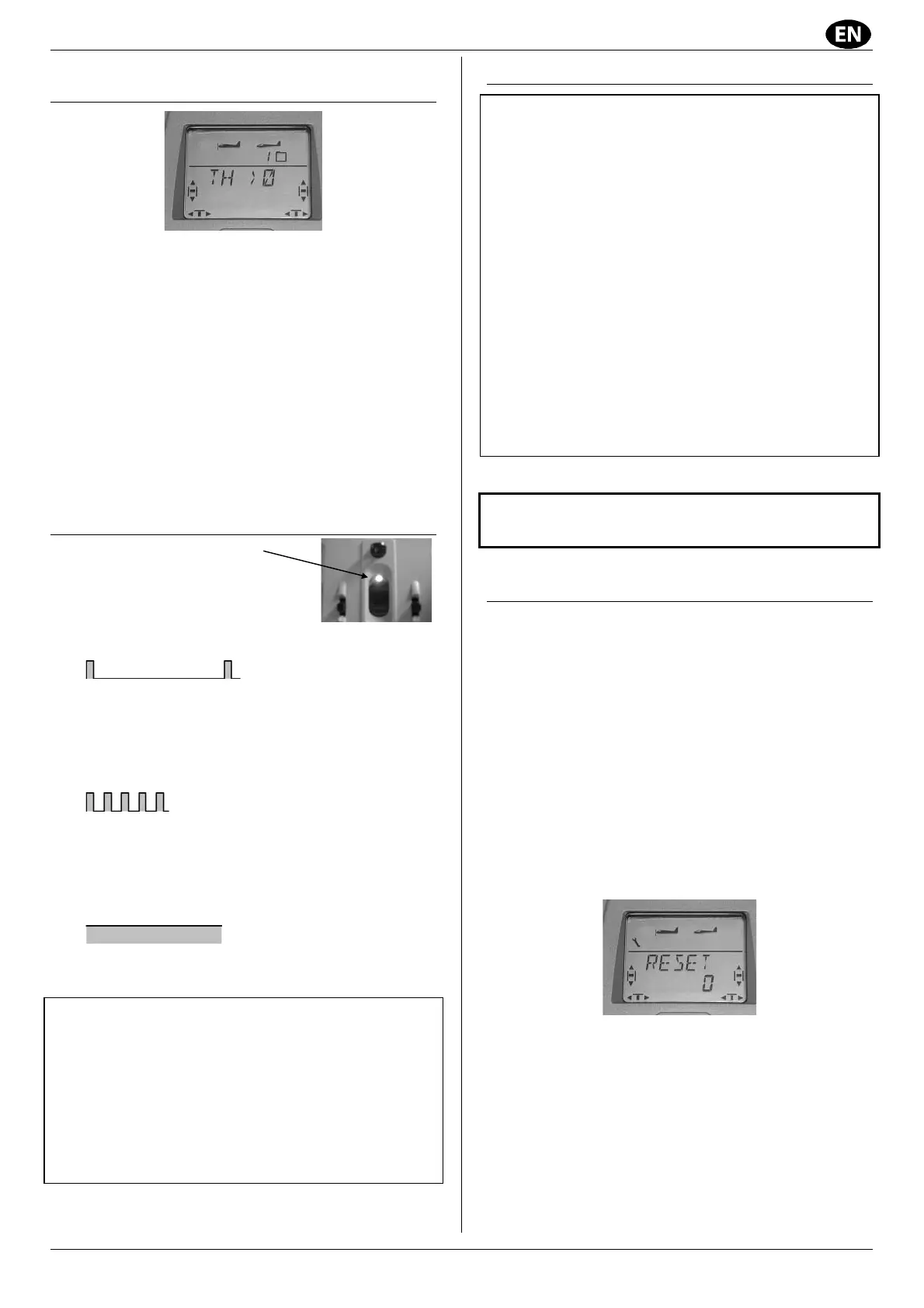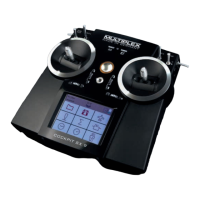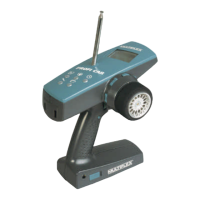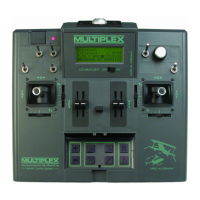Supplement to the manual
MULTIPLEX Modellsport GmbH & Co.KG • Westliche Gewerbestraße 1 • D-75015 Bretten (Gölshausen) • www.multiplex-rc.de Page 23
10.4. What to do if TH >0 appears
on the screen?
When switched on, the Cockpit SX M-LINK warns you
if the THROTTLE control is not in a safe position (idle,
or motor OFF). RF transmission is immediately acti-
vated, and the blue LED starts flashing. However, the
THROTTLE channel remains in the “Motor OFF” posi-
tion. All other functions can be controlled normally.
The THROTTLE channel is not released until you
move the THROTTLE control on the transmitter to the
Idle / Motor OFF position. The TH >0 display then
disappears, and the screen reverts to the INFO 1
display (Î 12.2.).
Only now does the receiver output respond to the
throttle control (stick or slider) again.
10.5. The RF Status indicator (blue LED)
The blue LED (light-emitting diode)
indicates the status of the RF mo-
dule. It is only exposed when the
transmitter is switched on.
LED flashing normally:
Î RF transmission present:
The LED flashes briefly at regular intervals, thereby in-
dicating that the transmitter is ready for use, and is
broadcasting an RF signal.
LED flashing at fast rate:
Î The transmitter is in binding mode (Î 10.2.):
In this way the LED indicates that the transmitter is in
binding mode, and is not broadcasting an RF signal.
LED glowing constantly:
Î The transmitter is working with reduced output
for the purpose of range checking (Î 3.2.):
The LED glows constantly, indicating that the transmit-
ter is broadcasting an RF signal with reduced power.
! Important: do not fly with reduced output!
The constantly glowing LED, a regular audible alarm
sequence and the on-screen message LO POW
(alternating with the model name and / or the current
menu) on the screen are intended to alert you to the
fact that you must not attempt to fly a model with the
transmitter set to low power.
! Caution:
Reduced power mode can only be switched off by
turning the transmitter itself OFF, then ON again.
10.6. General notes
Discuss frequencies with other pilots!
(frequency monitoring)
The conventional method of monitoring frequen-
cies is not necessary with 2.4 GHz transmission
systems. Nevertheless you should always inform
the frequency monitor official or the flight director
at the site that you are operating a 2.4 GHz trans-
mitter.
Transmit in the approved frequency range only !
Before you operate the M-LINK system in certain
countries you will need to activate the - restricted -
frequency range approved for that region.
A summary of the countries affected in this way
can be found in the separate sheet entitled
“Operating the 2.4 GHz M-LINK System with Restric-
ted Frequency Range”.
The approved frequency ranges vary, and are
country-specific. If necessary, activate the restric-
ted frequency range in the FRANCE menu (Î 7.1.).
12. Transmitter settings and
information displays
12.1. Transmitter settings
Menu:
(SETUP) TRANSM
12.1.1. Full transmitter reset
Menu: (SETUP, TRANSM) RESET
This menu enables you to reset the transmitter to the
state in which it was originally delivered. This means:
x Model memory1 is set up with a model of the
EASY type.
x All data in model memories 2 to18 is erased.
x The owner’s name is reset to “------”.
x The language for the menu texts is set to
EN (English).
How to access the RESET menu:
4 to MENU r (SETUP appears)
r (MODEL appears) 3 to TRANSM
r (BAT AL appears) 3 to RESET:
Open the menu with a brief press (r) on the 3-D digi-
adjuster (the 0 flashes). At this point you have to enter
the number18 using the 3-D digi-adjuster.
The RESET is only carried out if you switch the
transmitter off while the number18 is flashing.
We have adopted this procedure in order to exclude to
the greatest possible extent the possibility of carrying
out a RESET accidentally.
The number18 was arbitrarily chosen as code number,
and is easy to remember because the Cockpit SX
M-LINK has eighteen model memories.

